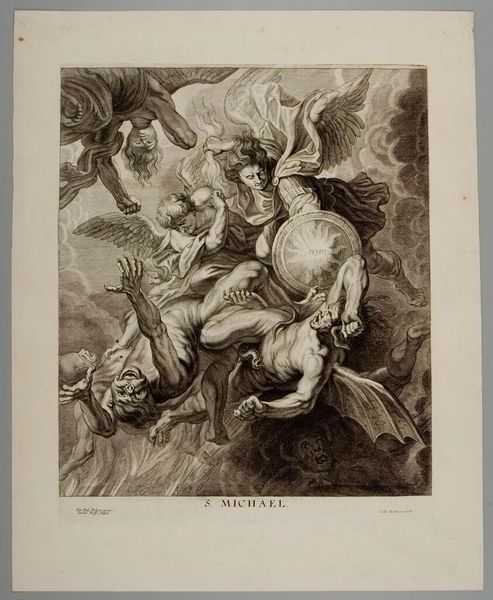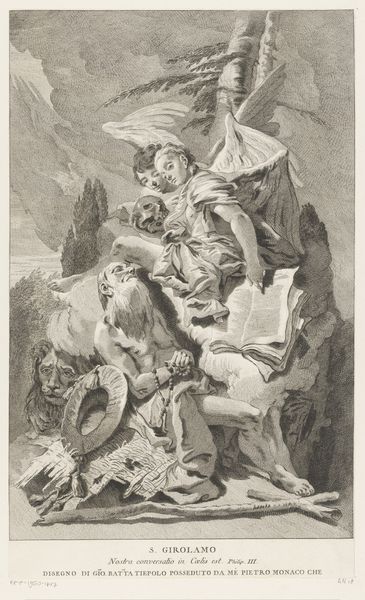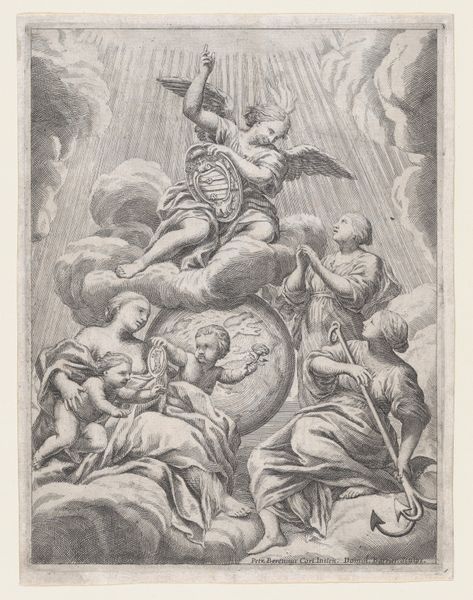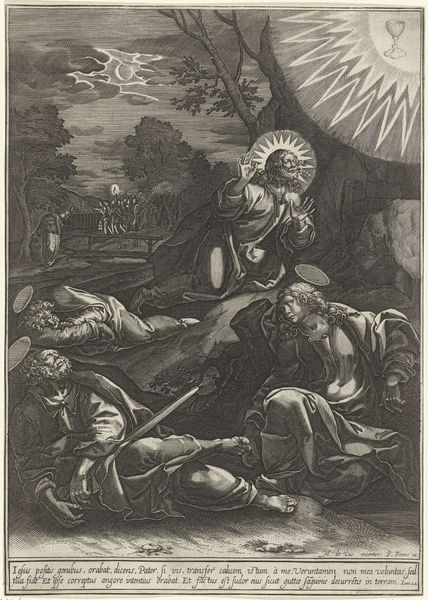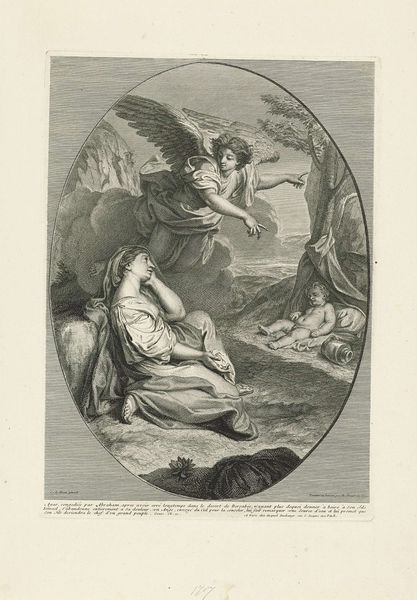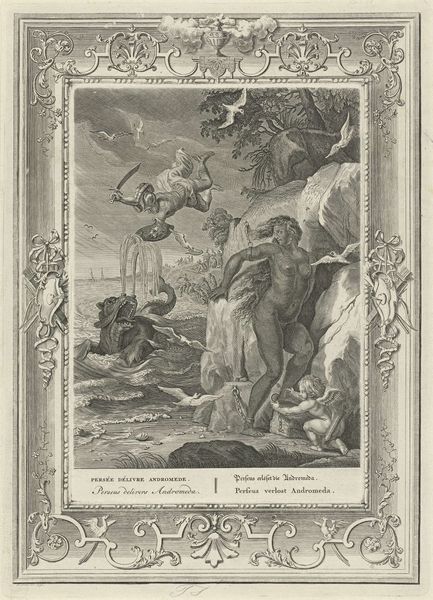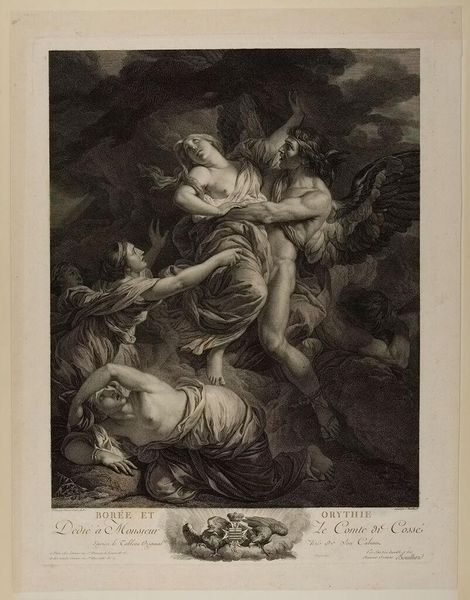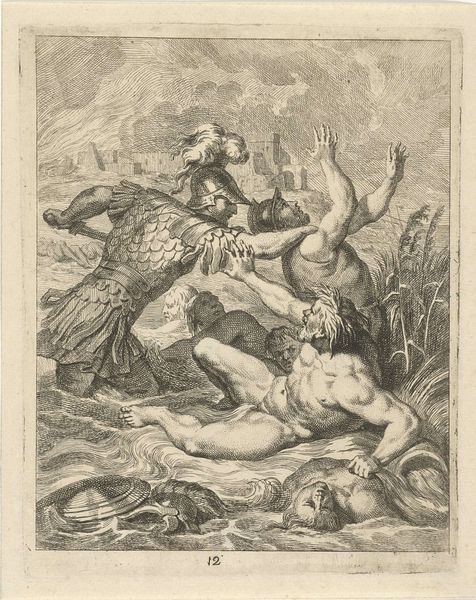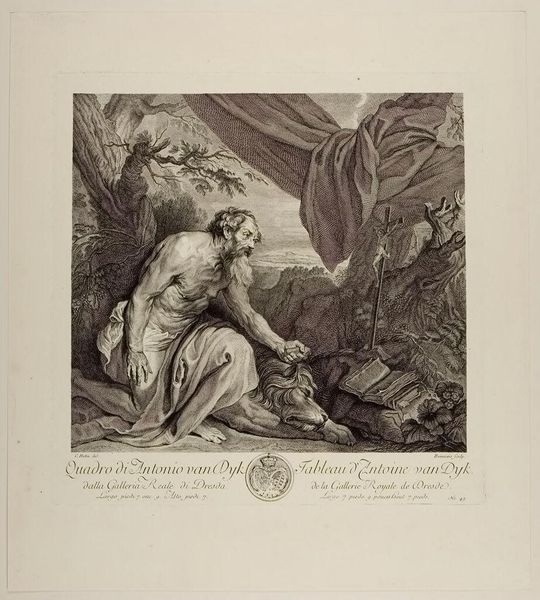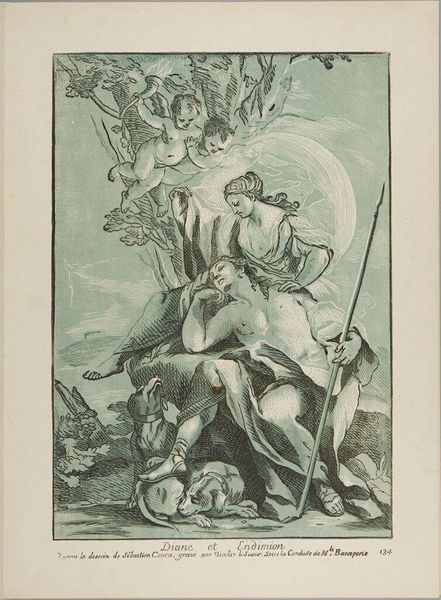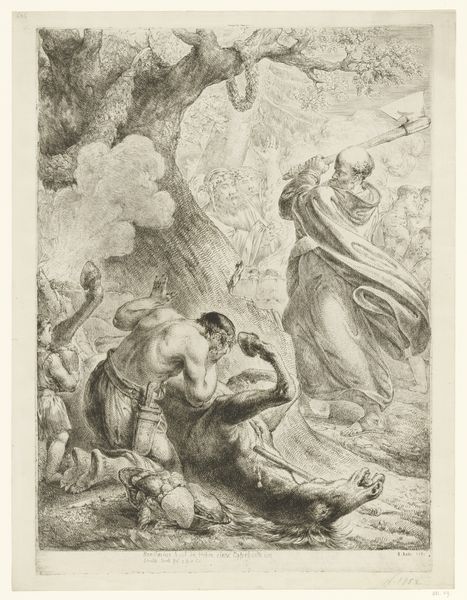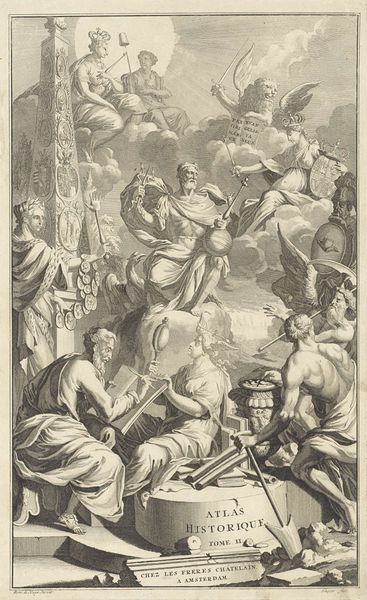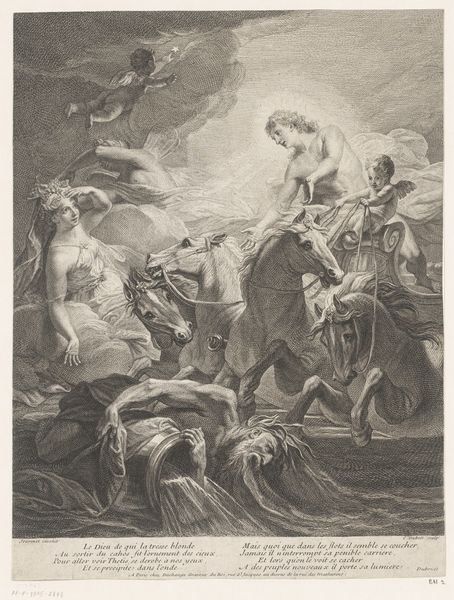
paper, engraving
#
portrait
#
baroque
#
old engraving style
#
classical-realism
#
figuration
#
paper
#
highly detailed
#
line
#
history-painting
#
engraving
Dimensions: height 250 mm, width 179 mm, height 350 mm, width 253 mm
Copyright: Rijks Museum: Open Domain
Bernard Picart made this print, Perseus slaying Medusa, sometime between 1696 and 1733, using etching and engraving techniques. The image depicts the Greek hero Perseus beheading the Gorgon Medusa, whose gaze could turn people to stone. The scene carries heavy associations. Medusa, often seen as a symbol of female power, is here violently subdued. The depiction of Perseus, guided by Athena, could be interpreted as the triumph of rational, masculine control over untamed feminine nature. Prints like this circulated widely in the 17th and 18th centuries. They disseminated classical myths and reinforced the cultural values of the time. During this period in Europe, patriarchal social structures were deeply entrenched, and such images might have served to naturalize power imbalances. To fully understand this print, scholars might consider the role of mythology in shaping social attitudes. Researching Picart's other works and the broader artistic trends of his time could offer further insights into the cultural work this image performed. By situating art within its social and institutional context, we can better understand its meanings and effects.
Comments
No comments
Be the first to comment and join the conversation on the ultimate creative platform.
